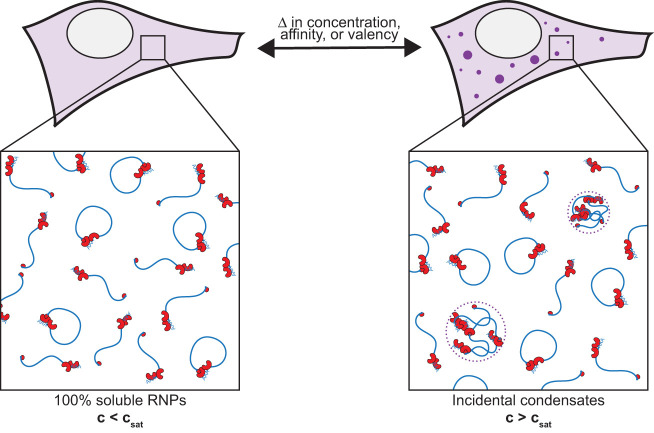Figure 3.
Near saturation conditions, changes in concentration, valency, or affinity of RNP complexes (or in the solvation capacity of the cytoplasm or nucleoplasm) are sufficient to induce condensation or dissolution of RNP complexes. Incidental condensates appear concentrated when visualized by fluorescence microscopy but contain only a fraction of RNP complexes, many of which remain in the dilute phase. Incidental condensates are tolerated by cells but add no functionality beyond that provided by RNP complexes in the dilute phase. Although nonessential, incidental condensates can be useful markers of cellular activity supported by saturating complexes, as well as markers of stress and aging (see the text).

